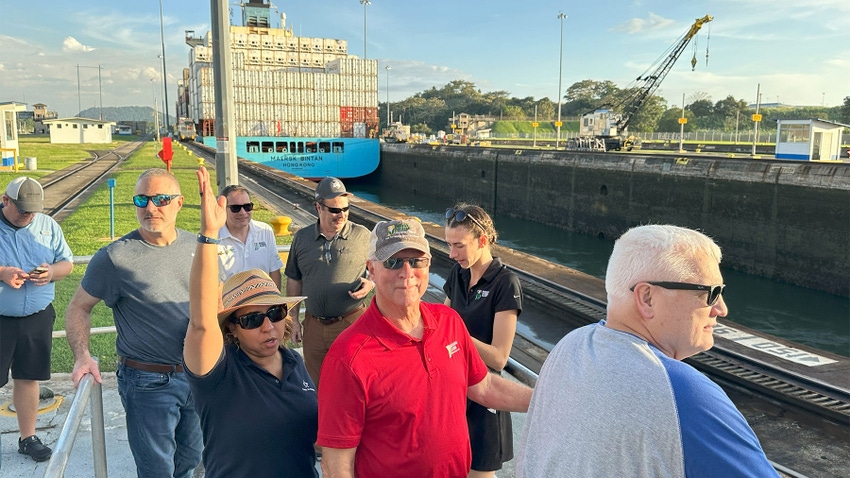
Your immediate concern for 2024 may be whether soil moisture fully recharges in your area before spring. However, another far-reaching impact from the drought occurring thousands of miles from your farm could also influence grain prices. Lack of moisture also affects transportation options and costs for grain headed for export.
“What we didn’t see when we visited the Panama Canal was more important than what we did see,” explains Mike Steenhoek, executive director of the Soy Transportation Coalition, a group formed in 2007 by the United Soybean Board, American Soybean Association and 14 state soybean boards.
“We saw container ships and a ship carrying thousands of cars going through the canal,” he continues. “What we didn’t see were dry bulk ocean-going vessels like the ones that carry bulk corn and soybeans.”
Impact on agriculture exports
The Panama Canal operates through a series of locks, Steenhoek explains. They’re necessary because Panama is a mountainous country, and ships must be lifted to a higher elevation through the canal and then lowered back down on the opposite side. It takes ample freshwater supplies for locks to function properly.
At last report, only 24 vessels are allowed to transit the canal each day, where 36 to 40 could pass if water levels were adequate, Steenhoek says. The allowable number was even lower in December.
“Water-conserving measures initiated by the Panama Canal Authority are working, so they revised the number, and that’s good news,” he says. “Unfortunately, most are ships with higher-value cargo, which can pay higher tolls compared to ships containing soybeans or corn.
“It’s not malicious on anybody’s part, and nobody likes it, including officials of the Panama Canal Authority. But it’s just reality right now.”
That leaves grain exporters seeking alternatives. The two major alternatives, the Suez Canal and the railroad option to the U.S. West Coast, both have challenges. Shipping in the Suez Canal region is harassed by terrorists, and rail shipping to the West Coast gets cumbersome and expensive. Except for states along the inland waterway system, infrastructure is designed to move grain to the Gulf, not the West Coast. Continuing problems along the Mississippi River due to drought don’t help either.
“It’s definitely worth keeping an eye on conditions in the Panama Canal,” Steenhoek says.
Close-up view of Panama Canal
Mike Koehne, Greensburg, Ind., a member of the Soy Transportation Coalition executive board, got a firsthand look of the Panama Canal during the recent trip there. He was able to go through the locks on a ship from the Atlantic Ocean to the Pacific Ocean, experiencing the canal for himself.
“It was my first time there,” Koehne says. “I produce some food-grade, non-GMO soybeans, which are exported in containers, so I got to see what happens to our soybeans once they leave the farm. Despite transportation issues, these container shipments are still occurring.”
Koehne firmly believes it’s important for growers to understand the export process. “These trips supported by checkoffs help us better understand challenges we face in exporting our grain, so we can make better decisions. It’s all important when it comes to ‘moving the pile’ of grain we produce in the U.S.,” he says.
About the Author(s)
You May Also Like




